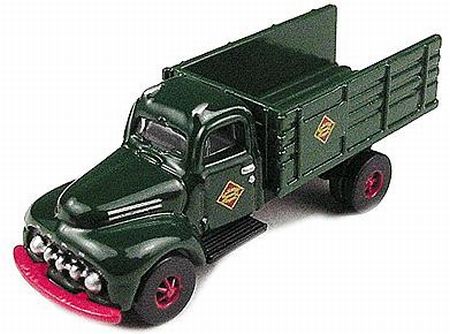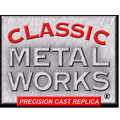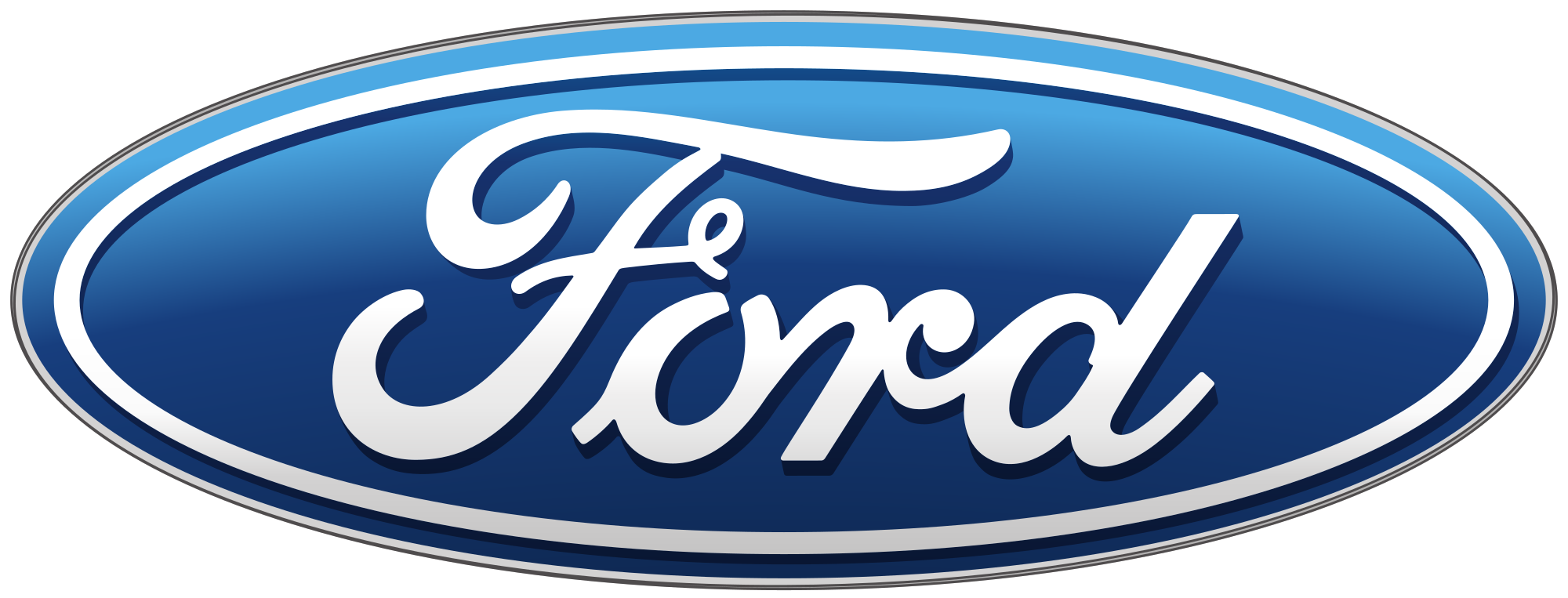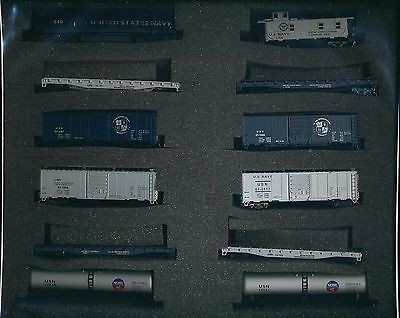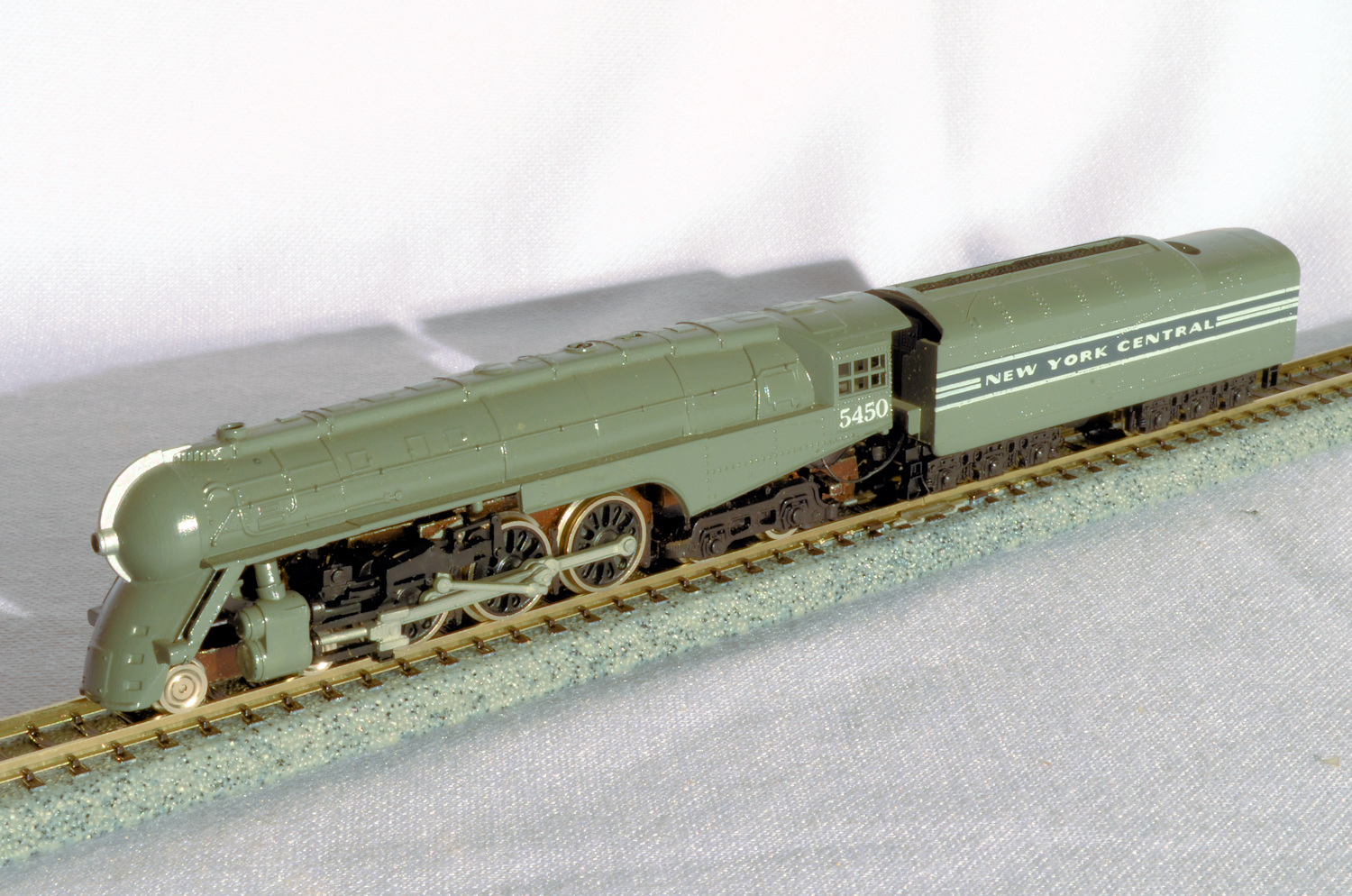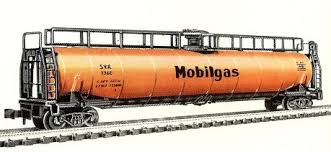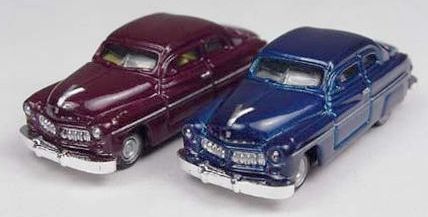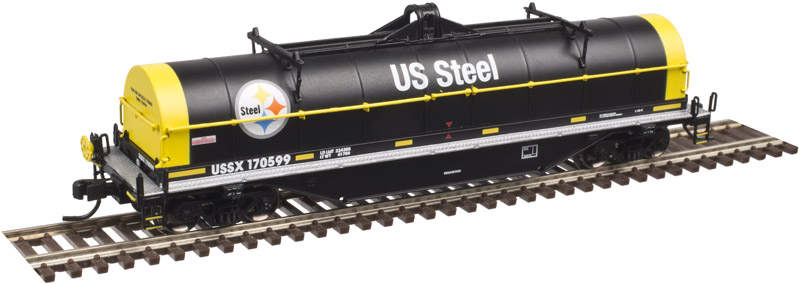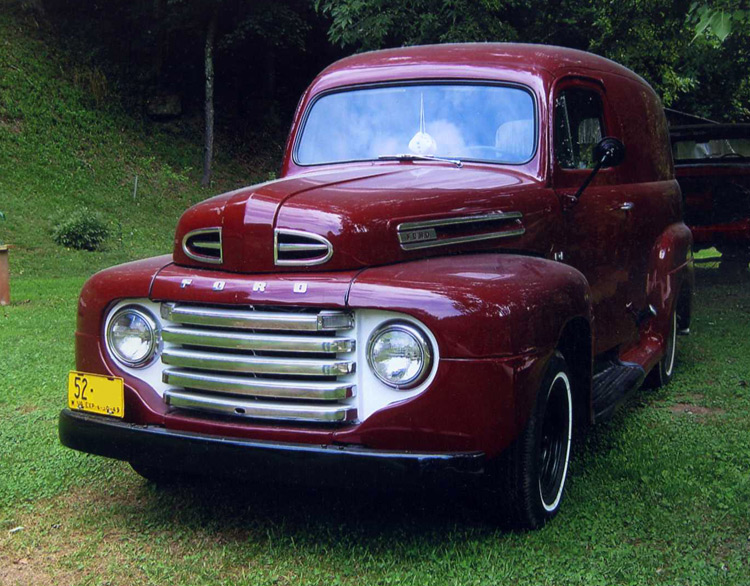Classic Metal Works - 50226 - Truck, Ford F-Series - Railway Express Agency - 1951 Ford F-6 Stake Truck
Click to see the details
market
| Stock Number | 50226 |
| Original Retail Price | $10.00 |
| Brand | Classic Metal Works |
| Manufacturer | Classic Metal Works |
| Body Style | Classic Metal Works Truck Stake Ford 51 |
| Prototype Vehicle | Truck, Ford F-Series (Details) |
| Road or Company Name | Railway Express Agency (Details) |
| Road or Reporting Number | 1951 Ford F-6 Stake Truck |
| Paint Color(s) | Dark green |
| Multipack | Yes |
| Multipack Count | 2 |
| Series Name | Mini Metals |
| Release Date | 2002-01-01 |
| Item Category | Vehicles |
| Model Type | Trucks |
| Model Subtype | Stake |
| Model Variety | 1951 Ford F-6 Stake |
| Prototype Region | North America |
| Prototype Era | All Eras |
| Years Produced | 1948 - Present |
| Scale | 1/160 |
Specific Item Information:
Listed as new in the 2003 Walthers N&Z Reference Book
Model Information:
The highly detailed diecast bodies are painstakingly finished in official factory paint colors. Next, they're pad printed to capture other details like chrome trim and graphics. The models also feature plated parts to simulate chrome hubcaps, wheels, grilles and bumpers. Each set includes two identical vehicles finished in different colors.
Prototype History:
The Ford F-Series is a series of light-duty trucks and medium-duty trucks (Class 2-7) that have been marketed and manufactured by Ford Motor Company since 1948. While most variants of the F-Series trucks are full-size pickup trucks, the F-Series also includes chassis cab trucks (flat bed) and commercial vehicles (box van). The Ford F-Series has been the best-selling vehicle in the United States since 1986 and the best-selling pickup since 1977.
In 1999, to bridge the gap between the pickup line and the medium-duty trucks, the F-250 and F-350 became the Ford Super Duty vehicles; considered an expansion of the F-Series, the Super Duty trucks are built on a distinct chassis with heavier-duty components. As of the 2017 model year, the F-Series includes the F-150, the Super Duty (F-250 through F-550), and F-650 and F-750 Super Duty medium-duty commercial trucks. The most popular version of the F-Series is the F-150, now in its thirteenth generation.
Through the use of rebadging, Ford has marketed the F-Series through all three Ford divisions in North America. From 1946 to 1968, Mercury sold the Mercury M-Series in Canada; during the 2000s, Lincoln sold the Lincoln Blackwood, replaced by the Lincoln Mark LT.
From Wikipedia
In 1999, to bridge the gap between the pickup line and the medium-duty trucks, the F-250 and F-350 became the Ford Super Duty vehicles; considered an expansion of the F-Series, the Super Duty trucks are built on a distinct chassis with heavier-duty components. As of the 2017 model year, the F-Series includes the F-150, the Super Duty (F-250 through F-550), and F-650 and F-750 Super Duty medium-duty commercial trucks. The most popular version of the F-Series is the F-150, now in its thirteenth generation.
Through the use of rebadging, Ford has marketed the F-Series through all three Ford divisions in North America. From 1946 to 1968, Mercury sold the Mercury M-Series in Canada; during the 2000s, Lincoln sold the Lincoln Blackwood, replaced by the Lincoln Mark LT.
From Wikipedia
Road Name History:
The Railway Express Agency (REA) was a national monopoly set up by the United States federal government in 1917. Rail express services provided small package and parcel transportation using the extant railroad infrastructure much as UPS functions today using the road system. The United States government was concerned about the rapid, safe movement of parcels, money, and goods during World War I and REA was its solution to this problem. REA ceased operations in 1975, when its business model ceased to be viable.
The first parcel express agency in the United States is generally considered to have been started by William Frederick Harnden (1812-1845), who in 1839 began regular trips between New York City and Boston, Massachusetts as a courier transporting small parcels, currency and other valuables. William G. Fargo, a New York Central freight clerk at Auburn, N.Y., and Henry Wells, a leather worker at Batavia, N.Y., organized Wells Fargo & Co. in 1853. Other parcel express pioneers include Henry B. Plant, who formed Southern Express Company, Alvin Adams who founded Adams Express Company, and John Warren Butterfield. Express delivery in the early 19th century was virtually all done via horse, either via stagecoach or by riders. Ad for a railroad, showing American Railway Express service along the line. 1922
The express business flourished in the latter half of the 19th century, and by 1900 there were four principal parcel express companies, all of which included the rapidly advancing railways as one of their means of transport: Adams Express Company, Southern Express Company, American Express Company, and Wells Fargo. In 1913 the U.S. Post Office introduced its Parcel Post service, which offered major competition for the express companies. Despite this, private railway express business increased steadily through the end of World War I.
During World War I, the United States Railroad Administration (USRA) took over the nation's railroads. Under the USRA, the four major and three minor express companies were consolidated as American Railway Express, Inc., save the portion of Southern Express that operated over the Southern Railway and the Mobile & Ohio. Railway Express Agency office, San Augustine, Texas, 1939 REA electric truck circa 1920.
In March 1929, the assets and operations of American Railway Express Inc. were transferred to Railway Express Agency (REA). REA was owned by 86 railroads in proportion to the express traffic on their lines - no one railroad or group of railroads had control of the agency. In response to customer demand, REA added a Chicago, Illinois-based refrigerator car line. In 1927, REA began an Air Express Division. In 1938, the remainder of Southern Express also joined the consolidated REA.
The first parcel express agency in the United States is generally considered to have been started by William Frederick Harnden (1812-1845), who in 1839 began regular trips between New York City and Boston, Massachusetts as a courier transporting small parcels, currency and other valuables. William G. Fargo, a New York Central freight clerk at Auburn, N.Y., and Henry Wells, a leather worker at Batavia, N.Y., organized Wells Fargo & Co. in 1853. Other parcel express pioneers include Henry B. Plant, who formed Southern Express Company, Alvin Adams who founded Adams Express Company, and John Warren Butterfield. Express delivery in the early 19th century was virtually all done via horse, either via stagecoach or by riders. Ad for a railroad, showing American Railway Express service along the line. 1922
The express business flourished in the latter half of the 19th century, and by 1900 there were four principal parcel express companies, all of which included the rapidly advancing railways as one of their means of transport: Adams Express Company, Southern Express Company, American Express Company, and Wells Fargo. In 1913 the U.S. Post Office introduced its Parcel Post service, which offered major competition for the express companies. Despite this, private railway express business increased steadily through the end of World War I.
During World War I, the United States Railroad Administration (USRA) took over the nation's railroads. Under the USRA, the four major and three minor express companies were consolidated as American Railway Express, Inc., save the portion of Southern Express that operated over the Southern Railway and the Mobile & Ohio. Railway Express Agency office, San Augustine, Texas, 1939 REA electric truck circa 1920.
In March 1929, the assets and operations of American Railway Express Inc. were transferred to Railway Express Agency (REA). REA was owned by 86 railroads in proportion to the express traffic on their lines - no one railroad or group of railroads had control of the agency. In response to customer demand, REA added a Chicago, Illinois-based refrigerator car line. In 1927, REA began an Air Express Division. In 1938, the remainder of Southern Express also joined the consolidated REA.
Brand/Importer Information:
Focused on the production of HO and N Scale post World War II to 1970s era North American vehicles, the Sylvania, Ohio based Classic Metal Works was founded in 1997, by William J. Giacci.
Primarily constructed out of die-cast metal, Mini Metals CMW products are factory assembled and decorated.
In May 2017, Classic Metal Works and Mini Metals product ranges have been taken over by Round 2 Corp.
Note: The following CMW stock numbers have not been used, breaking the linearity of the numbering: 50313 to 50315, 50362 to 50364, 51154 to 51163
Primarily constructed out of die-cast metal, Mini Metals CMW products are factory assembled and decorated.
In May 2017, Classic Metal Works and Mini Metals product ranges have been taken over by Round 2 Corp.
Note: The following CMW stock numbers have not been used, breaking the linearity of the numbering: 50313 to 50315, 50362 to 50364, 51154 to 51163
Item created by: Alain LM
on 2018-10-24 04:36:56
Last edited by: gdm on 2021-07-10 14:16:43
If you see errors or missing data in this entry, please feel free to log in and edit it. Anyone with a Gmail account can log in instantly.
Last edited by: gdm on 2021-07-10 14:16:43
If you see errors or missing data in this entry, please feel free to log in and edit it. Anyone with a Gmail account can log in instantly.


